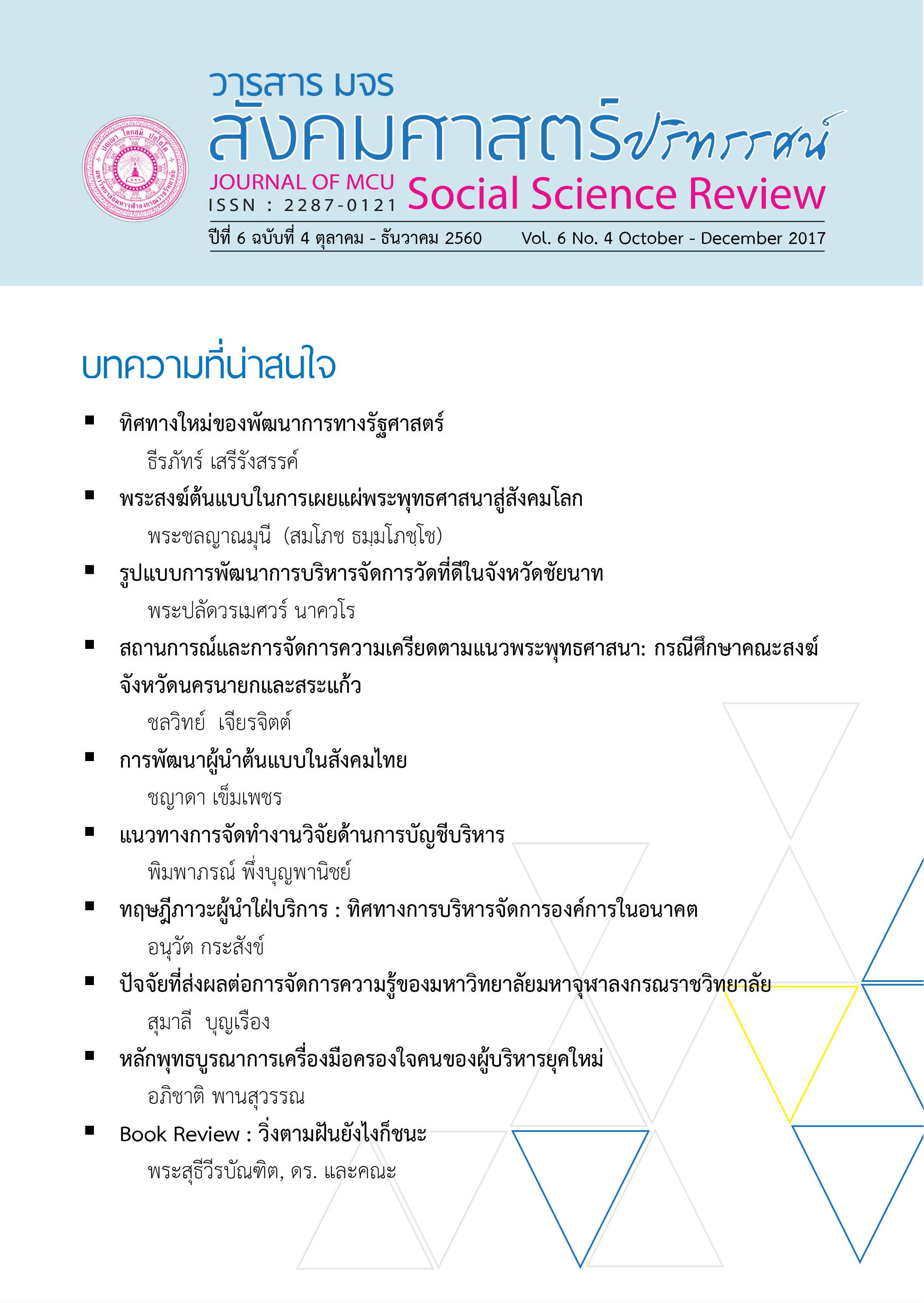THE DEVELOPMENT OF AN INSTRUCTIONAL MODEL ON GIVING GUIDANCE TO MAKE THE SECONDARY SCHOOL STUDENTS IN CHAINART RESTRAIN THEIR DESIRE TO HAVE PREMATURE SEX
Keywords:
Instructional model on giving guidance, Have premature sexAbstract
There were 3 main objectives in this research study. It aimed (1) to develop an instructional model emphasizing on giving guidance to make the secondary school students in Chainat restrain their desire to have premature sex , (2) to investigate the efficiency index of the mentioned model, and (3) to evaluate its effectiveness. The third objective was done by means of (3.1) comparing the sexual desire restraints of the students in an experimental group before and after their use of the instructional model as well as in a follow-up study. Besides (3.2) the sexual desire restraints of the students in a control group were compared before and after their use of the instructional model as well as in a following-up study.
The findings can be summarized as follows:
Firstly, there were 5 stages in designing and developing the aforementioned instructional model, viz: 1) Taking a pretest 2) Introducing learning materials, 3) Doing learning activities, 4) Summarizing/Exchanging what were learned and 5) Evaluation. The developed instructional activities focused mainly on cooperative learning between the students and the researchers and stimulating the students to have free thinking. The researchers acted only as access facilitators.
Secondly, on average the scores from 12 activities of the mentioned model were higher than the set criteria of 80/80 which indicted that the efficiency index of the model was high as predetermined.
Finally, it was found that on average the students in the experimental group had more knowledge on sex education than that of the control group significantly at the level = 0.001. There were the same results on the aspect of the attitudes towards having premature sex and on the aspect of the risk behaviors to have premature sex as follows. There were no statistically significant differences in the pretest between the experiment group and the control group. But in the posttest and in the follow-up study, there was statistically significant decrease at the level 0.001 in the experiment group compared to the control group.
References
Brahmawong Chaiyong. (1994). "Performance Tests" in Instructional Materials. Elementary 8 - 15. Unit 490 -493 Type 3 Bangkok: Sahamit Printing Factory.
Daengson, Chouwarit. (2015). Small Talks about Sex between Parents and Teenagers in the Northern Part of Thailand (Master’s Degree Thesis). Bangkok: Mahidol University.
Edwards, Jokeefe & Donna S.Berger. (1999). Self–Management. New York : AMACOM.
Kaemket, Wannee. (2006). Research Methodology in Behavioral Science, 2nd Edition.
Bangkok: Chulalongkorn University.
Nithakorn, Jurarath. (2013). A Follow-Up Study on a Survey and Solutions of Pre-Mature Pregnancy Problems (A Research Report). Health Department, Ministry of Public Health.
Punnawong Supawadee. (1986: 5).Guidance Psychology. Faculty of Education thaksin University.
Reproductive Health Office. (2010). A Report on Communication about Sex in Thai
Families. Agricultural Cooperatives in Thailand.
Rogers, Carl R. (1976). Client Centered Therapy. Boston : Houghton Company.
Sinthuravej, Somsak. (2007). Moving towards the Quality of Education. Bangkok: Thai Wattanapanit Printing Co.
Taweerat, Poungrat. (2000). Research Methodology in Behavioral and Social Sciences, 4th Edition. Bangkok: Educational and Psychological Testing Bureau, Sri Nakharinwirot University.
Downloads
How to Cite
Issue
Section
License
Copyright (c) 2017 Journal of MCU Social Science Review

This work is licensed under a Creative Commons Attribution-NonCommercial-NoDerivatives 4.0 International License.
In order to conform the copyright law, all article authors must sign the consignment agreement to transfer the copyright to the Journal including the finally revised original articles. Besides, the article authors must declare that the articles will be printed in only the Journal of MCU Journal of Social Sciences. If there are pictures, tables or contents that were printed before, the article authors must receive permission from the authors in writing and show the evidence to the editor before the article is printed. If it does not conform to the set criteria, the editor will remove the article from the Journal without any exceptions.





